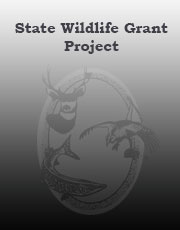Comparative Evaluation and Inventory of Small Mammals and Herptiles in SW ND (SWG T-10-R)
Concerns over increasing levels of atmospheric CO2, as well as changing global climate has resonated among the scientific community for several decades. Recent data and climate models suggest that global temperatures have already increased and will continue to do so into the future. These models and data further suggest that extensive disruptions to ecological communities may be overwhelming for many plants and animals, which could lead to local or regional extinctions. Small mammal communities typically function over relatively small spatial scales, suggesting that they are sensitive to shortterm climatic change. Drought cycles and periodic seed production are both known to promote wide variability in small mammal populations. Land use practices that introduce extensive habitat fragmentation may also affect small mammal communities. In this study we hypothesized that regional changes in climate in the northern Great Plains may have altered small mammal communities in western North Dakota over the last 30 years. We have access to a historical dataset from an intensive survey of the distribution of small mammals and many reptiles and amphibians over a large region of western North Dakota in the mid 1970s. Beginning in summer 2004 and continuing through summer 2006 we revisited the original survey locations from work in the 1970s to resample for small mammals. Sampling includes a combination of standardized trapping techniques with live traps, pitfall traps, and snap traps, which will provide quantitative information on species richness and diversity for comparison with the historic data. Beginning in 2005, we included methods that focus directly on the capture of amphibians and reptiles, such as, coverboards, night driving surveys, and randomized walks; thus allowing us to ascertain the most accurate data possible, for the distribution of herpitiles.

